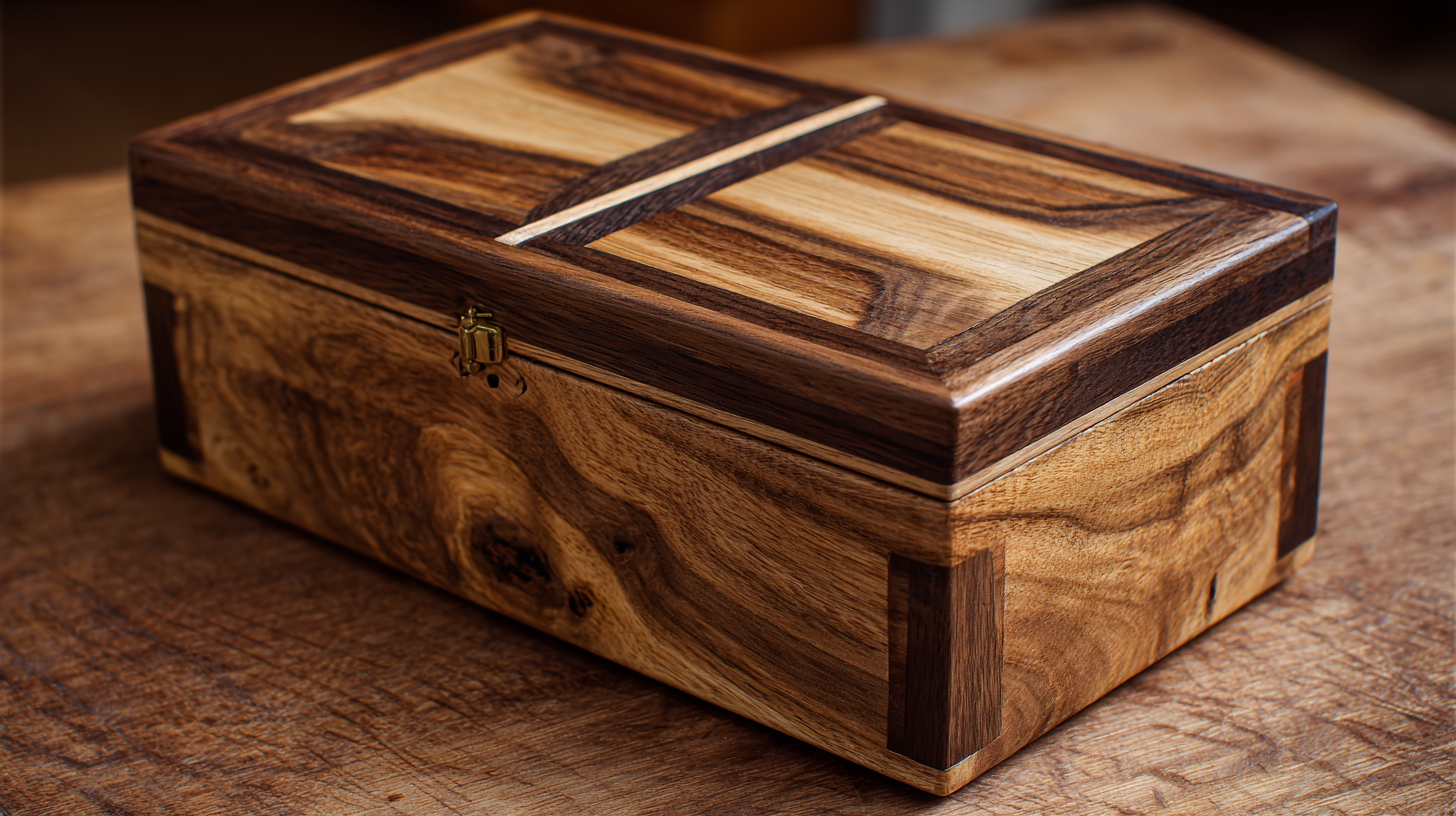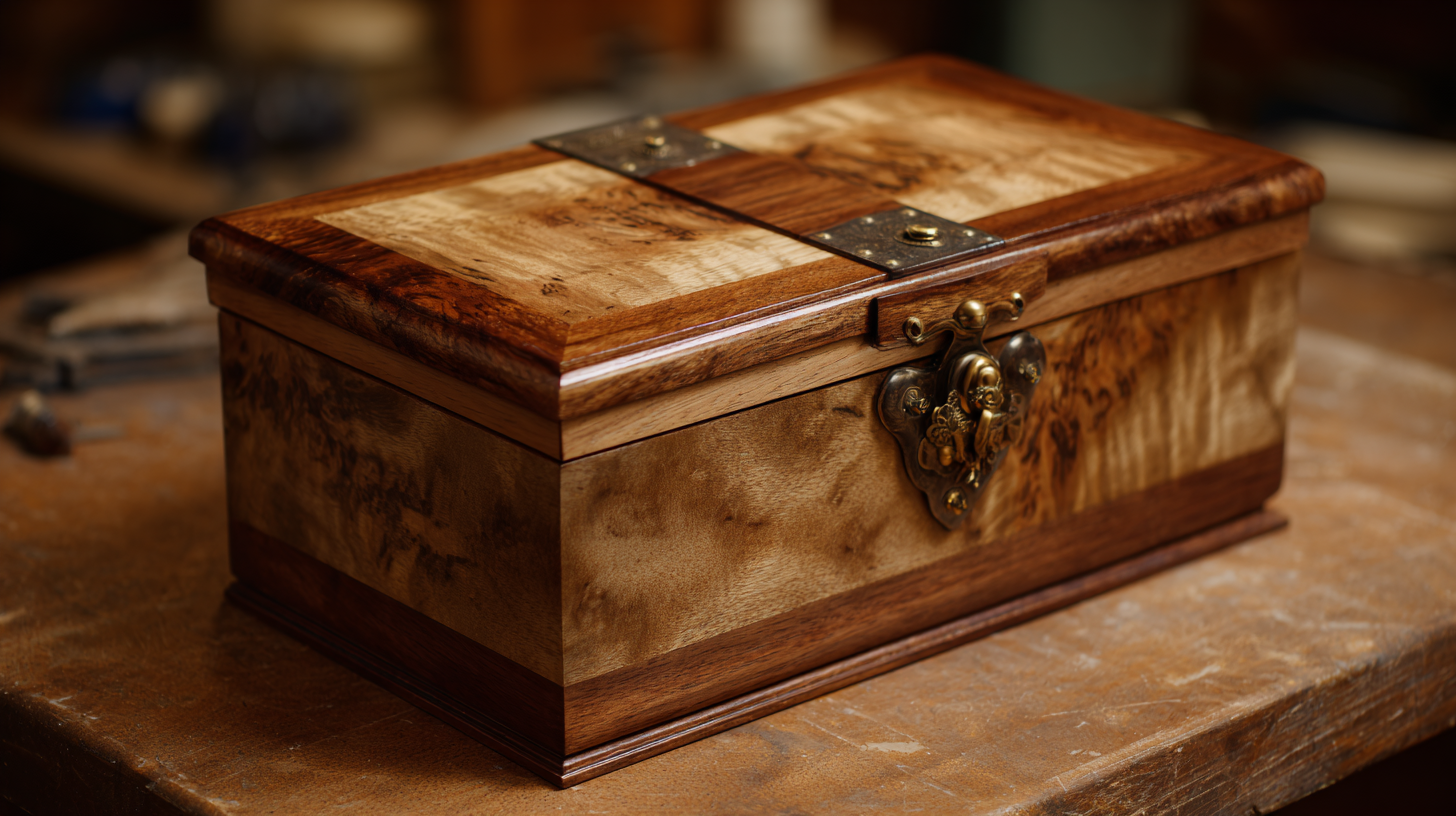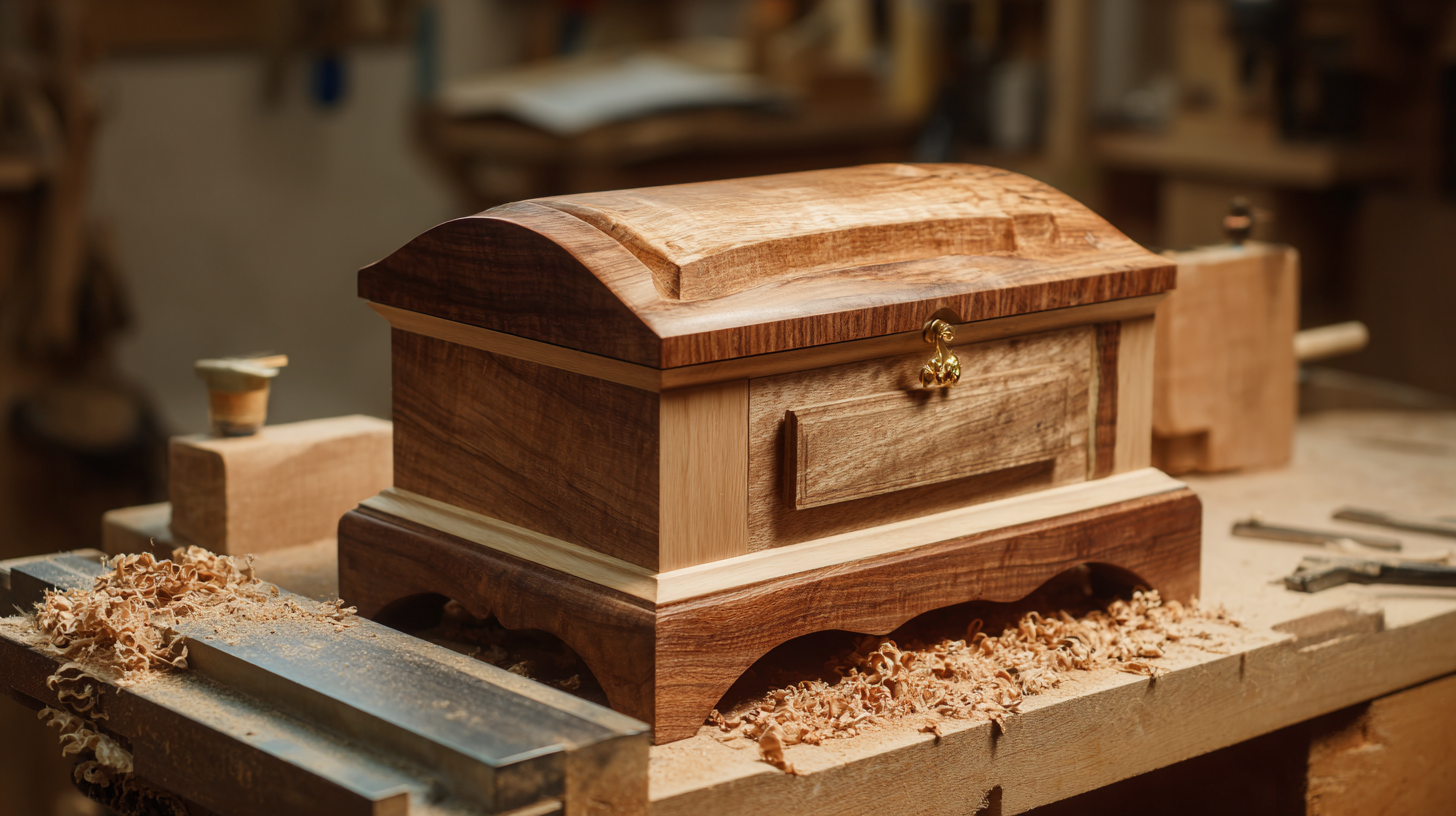The craft of creating a Woodwork Jewelry Box combines traditional woodworking techniques with modern aesthetics, resulting in a timeless elegance that appeals to collectors and enthusiasts alike. According to the The American Craft Council, the handcrafted woodworking industry has seen a resurgence over the past decade, with a 25% increase in market demand for bespoke wooden items, including jewelry boxes. This trend reflects a broader movement towards sustainable and unique artisan products that emphasize the value of craftsmanship over mass production.

With the global market for wooden accessories expected to reach $7.2 billion by 2025, crafting a distinctive Woodwork Jewelry Box not only serves as a functional item but also becomes a meaningful investment. As artisans explore innovative designs and techniques, the fusion of artistry and utility continues to captivate consumers seeking individuality and elegance in their personal belongings.
When crafting a jewelry box, selecting the right wood type is crucial not only for aesthetics but also for durability. Hardwoods such as oak, walnut, and cherry are often favored for their strength and rich grain patterns. According to a report by the Wood Products Council, over 70% of custom furniture makers prefer hardwoods for their projects due to their long-lasting nature and ability to take on intricate designs. Each wood type offers unique qualities; for instance, walnut provides a beautiful depth of color, evolving from a light brown to a dark, rich hue, which adds character to any piece.
Furthermore, the choice of wood impacts the overall craftsmanship experience. Birch and maple are popular options among jewelers for their ease of manipulation and fine finish. The Fine Woodworking Magazine states that maple is highly regarded for its smooth surface and can be easily stained or varnished to achieve the desired finish. Meanwhile, mahogany, known for its beautiful reddish-brown tone, has stabilized grain structure, making it an ideal choice for intricate carvings. Understanding these wood properties allows artisans to create not just boxes, but timeless heirlooms that can be cherished through generations.
When crafting a unique woodwork jewelry box, selecting the right tools and materials is crucial for achieving high-quality results. Start with premium hardwoods such as oak, mahogany, or cherry, which not only provide structural integrity but also enhance the beauty of the final product. Softwoods like pine can also be used, but they may not offer the same level of durability. Don’t forget to invest in quality hardware, such as hinges and locks, which contribute both to the functionality and elegance of the jewelry box.
Essential tools include a miter saw for precise cuts, a router for creating intricate designs, and sanders for smoothing surfaces. A measuring tape and square are vital for ensuring accurate dimensions, while wood glue and clamps are necessary for strong joints. For finishing touches, consider using wood stain or varnish to enhance the natural color of the wood and protect it from wear.
Tips: Always test your finishes on scrap wood before applying them to your main project. This will help you achieve the desired effect without unexpected surprises. When working with intricate designs, take your time and don’t rush the process to ensure precision and quality craftsmanship.
Designing a jewelry box is an intricate process that demands a delicate balance between aesthetics and functionality. According to a report from the Crafts Council, the global market for handmade wooden products is projected to reach $2.5 billion by 2025, highlighting the increasing demand for bespoke items that combine beauty with utility. When crafting a jewelry box, it's essential to consider the materials used, the layout of storage compartments, and the overall visual appeal. Incorporating features such as soft linings and easy-access drawers can enhance the user experience while maintaining an elegant design.
**Tips:** When choosing materials, opt for quality hardwoods like walnut or cherry, which not only provide durability but also add a touch of class. Additionally, ensure that the compartments are designed to accommodate various jewelry pieces, from rings to necklaces, so that the box serves its purpose effectively without compromising on style. Decorative elements such as inlays or carvings can elevate the design while reinforcing the box's uniqueness, appealing to those who appreciate both craftsmanship and visual harmony.
When it comes to crafting a unique woodwork jewelry box, finishing techniques play a crucial role in both durability and aesthetic appeal. According to a report by the Wood Products Council, over 50% of wood damage in furniture stems from improper finishing processes. Choosing the right finish not only protects the wood from moisture and scratches but also enhances its natural beauty.
For example, oil finishes are gaining popularity because they penetrate deep into the wood, providing a protective layer while allowing the grain to shine through. This technique can increase the longevity of a piece by up to 30%, making it a smart choice for jewelry boxes meant to last a lifetime.
In addition to oil finishes, polyurethane and varnish are excellent options for achieving a hard-wearing surface. A study conducted by the Finishing Industry Association indicates that wood surfaces finished with polyurethane can resist wear and maintain their luster for up to five times longer than those finished with traditional wax. By employing these modern finishing techniques, artisans can create jewelry boxes that not only showcase timeless elegance but also withstand the test of time. Therefore, incorporating the right finishing process is essential for anyone looking to elevate their woodwork projects and ensure their creations remain beautiful and functional for generations.

The market for handmade jewelry boxes has seen a significant evolution in consumer preferences, driven by a growing appreciation for craftsmanship and unique designs. According to a recent report from Grand View Research, the global jewelry box market is projected to reach $2.4 billion by 2025, with the handmade segment experiencing a notable surge. Consumers today are increasingly gravitating towards products that offer a personal touch, emphasizing sustainable sourcing and artisanal methods. Approximately 64% of consumers in a recent survey indicated a preference for handcrafted goods, reflecting a desire for authenticity and individuality in their purchases.
Pricing strategies for handmade jewelry boxes must also align with these evolving consumer expectations. The average price point for a high-quality, unique wooden jewelry box can range anywhere from $50 to $300, depending on the intricacy of the design and the materials used. As highlighted by research from IBISWorld, the handmade goods sector has witnessed a rise in the willingness of consumers to pay a premium for distinctive products, with over 70% of buyers expressing that they would choose a slightly higher-priced item if it came from a local artisan. Consequently, woodworkers aiming to enter this market should focus on not only the craftsmanship but also on effective storytelling around their products to justify the price and appeal to discerning customers.







